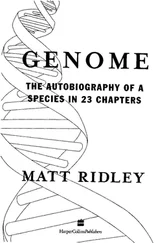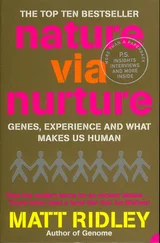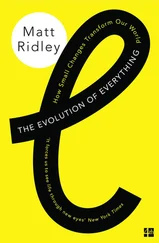The Queen - Matt Ridley
Здесь есть возможность читать онлайн «The Queen - Matt Ridley» весь текст электронной книги совершенно бесплатно (целиком полную версию без сокращений). В некоторых случаях можно слушать аудио, скачать через торрент в формате fb2 и присутствует краткое содержание. Жанр: Старинная литература, на английском языке. Описание произведения, (предисловие) а так же отзывы посетителей доступны на портале библиотеки ЛибКат.
- Название:Matt Ridley
- Автор:
- Жанр:
- Год:неизвестен
- ISBN:нет данных
- Рейтинг книги:4 / 5. Голосов: 1
-
Избранное:Добавить в избранное
- Отзывы:
-
Ваша оценка:
- 80
- 1
- 2
- 3
- 4
- 5
Matt Ridley: краткое содержание, описание и аннотация
Предлагаем к чтению аннотацию, описание, краткое содержание или предисловие (зависит от того, что написал сам автор книги «Matt Ridley»). Если вы не нашли необходимую информацию о книге — напишите в комментариях, мы постараемся отыскать её.
Matt Ridley — читать онлайн бесплатно полную книгу (весь текст) целиком
Ниже представлен текст книги, разбитый по страницам. Система сохранения места последней прочитанной страницы, позволяет с удобством читать онлайн бесплатно книгу «Matt Ridley», без необходимости каждый раз заново искать на чём Вы остановились. Поставьте закладку, и сможете в любой момент перейти на страницу, на которой закончили чтение.
Интервал:
Закладка:
::: 322 :::
The Red Queen
that are perceived: Tooby and Cosmides argue that "higher " mental mechanisms are the same. There are specialized mechanisms in the mind that are "designed " by evolution to recognize faces, read emotions, be generous to one 's children, fear snakes, be attracted, to certain members of the opposite sex, infer mood, infer semantic meaning, acquire grammar, interpret social situations, perceive asuitable design of tool for a certain job, calculate social obliga-tions, and so on: Each of these " modules " is equipped with some knowledge of the world necessary for doing such tasks, just as the human kidney is designed to filter the blood.
We have modules for learning to interpret facial expressions—parts of our brain learn that and nothing else. At ten weeks we assume that objects are solid, and therefore two objects cannot occupy the same space at the same time—an assumption that no amount of exposure to cartoon films will later undo. Babies express surprise when shown tricks that imply two objects can occupy the same place. At eighteen months babies assume there is no such thing as action at a distance—that object A cannot be moved by object B unless they touch. At the same age we show more interest in sorting tools according to their function than according to their color. And experiments show that, like cats, we assume any object capable of self-generated motion is an animal, which is something we only partially unlearn in our machine-infested world: 16
That last is an example of how many of the instincts in our heads develop on . the assumption that the world is that of the Pleistocene period, before cars: Infant New Yorkers find it far easier to acquire a fear of snakes than of cars, despite the far greater danger posed by the latter. Their brains are simply predisposed to fear snakes:
Fearing snakes and assuming that self-propelled motion is a sign of an animal are instincts that are probably as well developed in monkeys as in people: Nor is the unwillingness of adults to have sex with people with whom they have lived as children—the incest-avoidance instinct—peculiarly human. Lucy did not need a bigger brain for these things any more than a dog did.
The one thing Lucy did not need was to have to start from THE INTELLECTUAL CHESS GAME
:::323 :::
scratch and learn the world afresh every generation. Culture could not teach her to detect edges in the visual field; it did not teach her the rules of grammar: It could have taught her to fear snakes, but why bother? Why not let her be born with a fear of snakes? It is not obvious to somebody with an evolutionary perspective quite why we must consider learning so valuable. If learning really did replace instincts rather than enhance and train them, then we would spend half our lives relearning things that monkeys know automatically, such as the fact that unfaithful mates can cuckold you: Why bother to learn them? Why not allow the Baldwin effect to turn them into instincts and spend slightly less time going through the laborious business of adolescence? If a bat had to learn to use its sonar navigation from its parents, rather than simply developing the ability as it grew, or a cuckoo had to learn the way to Africa in winter, rather than " knowing " before setting off, then there would be a lot more dead bats and lost cuckoos every generation. Nature chooses to equip bats with echo-location instincts and cuckoos with migration instincts because it is more efficient than making them learn. True, we learn a lot more than bats and cuckoos do. We learn mathematics and a vocabulary of tens of thousands of words and what people 's characters are like: But this is because we have instincts to learn these things (with the possible exception of mathematics), not because we have fewer instincts than bats or cuckoos.
THE TOOLMAKER MYTH
Until the mid 1970s the question of why people needed big brains when other animals did not had only really been posed by the anthropologists and archaeologists who study the bones and tools of ancient human beings. Their answer, persuasively summarized by Kenneth Oakley in 1949 in a book called Man the Toolmaker, was that man was a tool user and toolmaker par excellence and that he developed a big brain for that purpose: Given the increasing sophistica-tion of man's tools throughout his history, and the sudden leaps of
::: 324 :::
The Red Queen
technical skill that seemed to accompany each change in skull size—from habilis to erectus, from erectus to sapiens, from Neanderthal to modern—this made some sense: But there were two problems with it. First, during the 1960s the ability of animals, especially chimps, to make and use tools was discovered, which rather took the shine off Homo habilis's somewhat basic tool kit. Second, there was a suspicious bias about the argument. Archaeologists study stone tools because that is what they find preserved. An archaeologist of a million years in the future would call ours the concrete age, with some justice, but he might never even know about books, newspapers, television broadcasts, the clothes industry, the oil business, even the car industry—all traces of which would have rusted away. He might assume that our civilization was characterized by hand-to-hand combat by naked people over concrete citadels. Perhaps, in like fashion, the Neolithic age was distinguished from the Paleolithic not by its tool kit but by the invention of language or marriage or nepotism or some such unfossilizable signature: Wood probably loomed larger than stone in people 's lives, yet no wooden tools survive."
Besides, the evidence from the tools, far from suggesting continuous human ingenuity, speaks of monumental and tedious conservatism. The first stone tools, the Oldowan technology of Homo habilis, which appeared about 2.5 million years ago in Ethiopia, were very simple indeed: roughly chipped rocks: They barely improved at all over the next million years, and far from experimenting, they became gradually more standardized: They were then replaced by the Acheulian technology of Homo erectus, which consisted of hand axes and teardrop-shaped stone devices.
Again, nothing happened for a million years and more, until about 200,000 years ago when there was a sudden and dramatic expansion in the variety and virtuosity of tools at about the time that Homo sapiens appeared: From then on there was no looking back: Tools grew ever more varied and accomplished until the invention of metal: But it comes too late to explain big heads; heads had been swelling ever since 3 million years ago. 1eMaking the tools that erectus used is not especially hard.
THE INTELLECTUAL CHESS GAME
::: 325 :::
Everybody could do it, presumably, which is why it was done all over Africa. There was no inventiveness or creativity going on: For a million years these people made the same dull hand axes, yet their brains were already grossly large by ape standards: Plainly, the instincts of manual dexterity, perception of shape, and reverse engineering from function to form were useful to these people, but it is highly implausible to account for the enlargement of the brain as driven entirely by an enlargement of these instincts: The first rival to the toolmaking theory was "man the hunter. " In the 1960s, starting with the work of Raymond Dart, there was much interest in the notion that man was the only ape to have taken up a meat diet and hunting as a way of life: Hunting, went the logic, required forethought, cunning, coordination, and the ability to learn skills such as where to find game and how to get close to it. All true, all utterly banal: Anybody who has ever seen a film of lions hunting zebra on the Serengeti will know how skillful lions are at each of the tasks mentioned above: They stalk, ambush, cooperate, and deceive their prey as carefully as any group of humans ever could. Lions do not need vast brains, so why should we? The fashion for man the hunter gave way to woman the gatherer, but similar arguments applied. It is simply unnecessary to be capable of philosophy and language to be able CO dig tubers from the ground. Baboons do it just as well as women. 19
Читать дальшеИнтервал:
Закладка:
Похожие книги на «Matt Ridley»
Представляем Вашему вниманию похожие книги на «Matt Ridley» списком для выбора. Мы отобрали схожую по названию и смыслу литературу в надежде предоставить читателям больше вариантов отыскать новые, интересные, ещё непрочитанные произведения.
Обсуждение, отзывы о книге «Matt Ridley» и просто собственные мнения читателей. Оставьте ваши комментарии, напишите, что Вы думаете о произведении, его смысле или главных героях. Укажите что конкретно понравилось, а что нет, и почему Вы так считаете.












